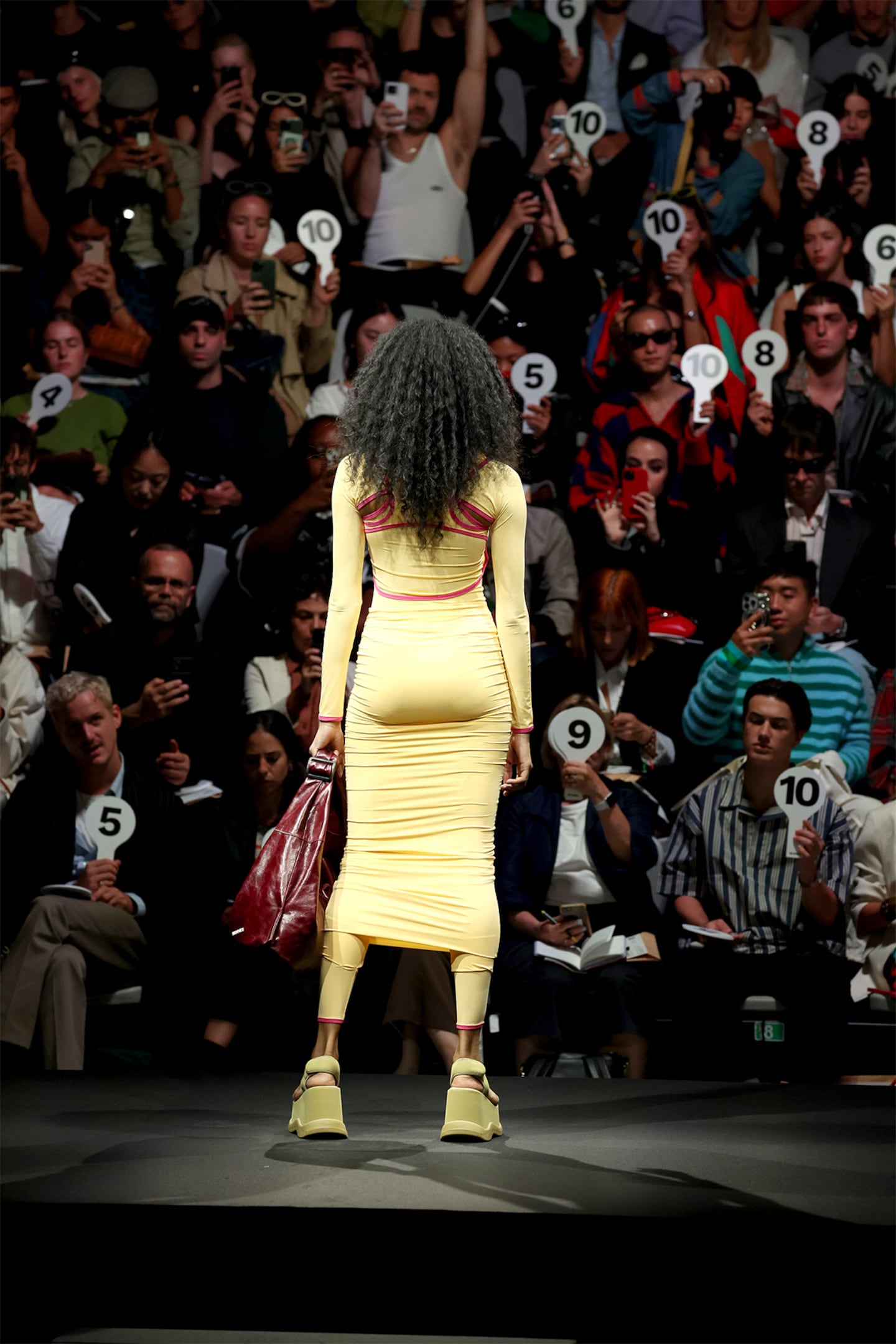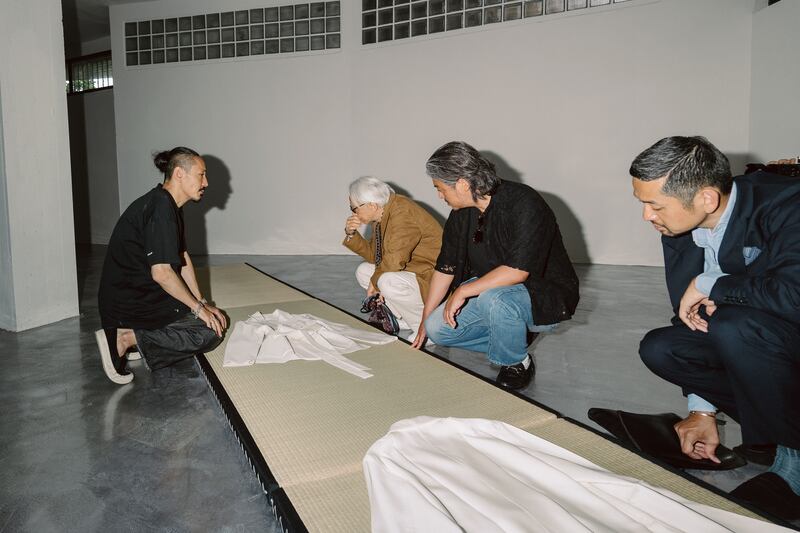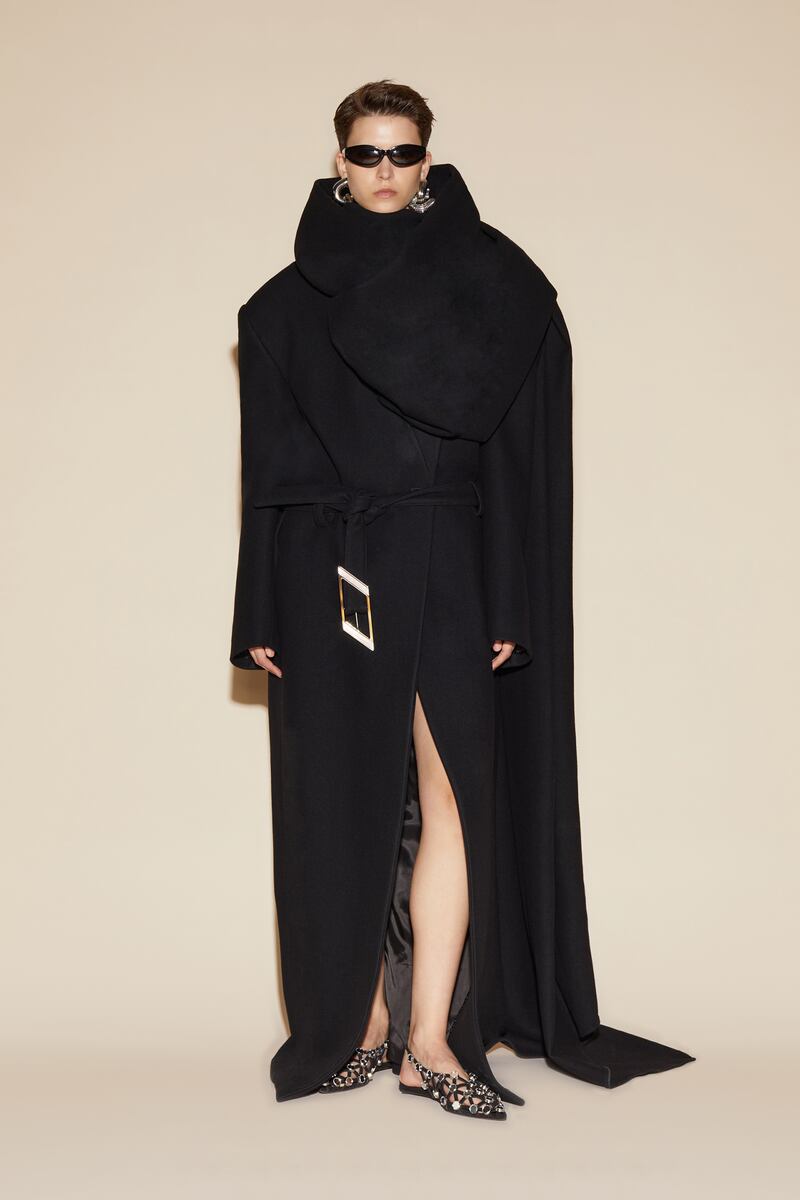
The Business of Fashion
Agenda-setting intelligence, analysis and advice for the global fashion community.

Agenda-setting intelligence, analysis and advice for the global fashion community.

MILAN – “I don’t think being more famous is the same as being more successful, really,” Setchu founder Satoshi Kuwata said Thursday at his showroom on Milan’s Corso Como.
Nonetheless, fashion fame seems to be in the cards for the designer, whose label took home top honours at this year’s LVMH Prize despite having never staged a runway show. Founded in 2021, the brand is now sold by stockists including Dover Street Market, Italian fashion stalwarts like Antonia and Biffi, and Japan’s Beams.
Kuwata’s approach, which has prioritised developing materials, patterns and a core wardrobe over social-media buzz, is typical of the Italian fashion ethos: After working at brands in Paris, London and New York he opted to start his business in Milan, where proximity to suppliers and a robust ecosystem of multi-brand luxury shops often encourage brands to build their business from the ground up.
Here, ambitious brands often work closely with factories to develop saleable products and spend years courting stockists and clients before taking their wares to the runway.
ADVERTISEMENT
Kuwata adds a layer of innovation and storytelling that has long been scarce among young brands in Milan. His garments combine his experience as a Savile Row tailor with ideas rooted in Japanese culture, like jackets that are meant to be folded like kimonos to reinforce their pleats. His work evokes Italian fashion heritage, too: gowns made using silk from Como are designed to be rolled up and stored in tubes, like Fortuny’s Delphus dress.

Setchu won the LVMH Prize alongside knitwear and tailoring brand Magliano, another Milanese brand which draws inspiration from class struggles and leftist counterculture in Bologna — the latest sign that Italian fashion is making headway in its long-running struggle to cultivate younger, hipper and more creative fashion concepts.
For now, both brands opt to present their collections on the menswear calendar, where the audiences may be smaller but the schedule is less jam-packed. Buying budgets are often higher, too, Kawata points out: plenty of wholesale buyers come to menswear week with the funding for bread-and-butter womens’ pre-collections in mind as well.
At September 2023′s Milan womenswear week, big-brand moments like designer Sabato de Sarno’s Gucci debut, Peter Hawkings’ Tom Ford and Prada (where not just one, but two star creative directors have shared the throne since 2020) have continued to dominate the agenda.
Still, there are signs of younger Milanese labels gaining traction. Luxury dressmaker Del Core, which was founded in 2020 and showed Wednesday, opened a flagship store in London late last year.
The label Sunnei (founded in 2014) showed Friday, courting buzz with a concept that provoked editors to rate looks with paddles, like judges at a sporting event. The brand has renovated its store to make space for an expanded accessories line after attracting investment during the pandemic from the owner of Hungarian contemporary brands Nanushka and Aeron, which is aiming to grow a new fashion group dubbed Vanguards.

The Attico, founded in 2016 and known for its girly, sparkly contemporary ensembles, now counts 250 stockists and is set to stage its first-ever runway show Saturday. True to the tradition of Italian brands building their business around clients and products (rather than starting with image, then worrying about what to sell later) the brand has attracted an increasingly buzzy community of dolled-up women to its presentations in private residences before taking its collections on the road, staging photo-ready celebrations in Paris and New York.
A proper runway show with 40 to 45 looks felt like the logical next step for the company, which founders Gilda Ambrosio and Giorgia Tordini say has been all about “gradual, healthy growth.”
ADVERTISEMENT
Despite their apparent success, the duo say competing for talent, space and manufacturers with Italian heritage brands hasn’t been easy. Even securing a good slot on the crowded fashion week calendar can be a challenge: they settled for a daytime slot for an eveningwear focused-collection, like many brands before them.
Carlo Capasa, president of Milan Fashion Week’s organising body CNMI, says the group has been working for nearly decade to increase support for young brands, whether through grants, helping to secure (and even sometimes pay for) show and showroom spaces, and not requiring brands beneath a certain size to pay dues in order to appear on the official calendar.
If emerging brands appear to be gaining more traction now, it’s in part because these things take time, Capasa said. With so many kings in so many castles, the Milan scene has a highly territorial reputation.
Brands are also getting a boost from a fashion cycle in which shoppers, retailers and even stylists and editors are finding themselves fatigued with the industry’s social media-fuelled focus on image and branding, and are rediscovering the pleasure of product. “People like knowing that there’s a real product, a real business behind these brands,” Capasa said. “Some in the market are tired of getting excited about a brand that knows how to sell the dream but never turns it into something real.”
Call it quiet luxury, call it logo-fatigue–or something else entirely: Milan also stands to benefit from revived interest in Y2K fashion, whose DNA is all about mixing sexed-up styling and buzzy antics with the top-notch production of Italian supply chains, pointed out Mumi Haiati, whose communications agency Reference Studios works with Italian upstarts including Magliano and Marco Rambaldi.
Even as independent fashion gains ground, the industry’s ruling families are rarely out of sight. The Attico has leveraged investment capital from Moncler’s Ruffini family, which purchased a large minority stake in 2018.
Young footwear label Nicoló Beretta showed a collection produced with support from Zanotti. And if an international emerging brand made it onto the calendar— London’s Karoline Vitto—the brand has been hosted and sponsored by Dolce & Gabbana.
Challenges remain for fostering creative brands. The city’s identity as a hub for conservative, commercial fashion often goes hand-in-hand with a dearth of racial or linguistic diversity, sparking frustration. (An Italian designer with Haitian ancestry, Stella Jean, dropped out of fashion week last year in protest of industry’s slow progress on diversity). All of those factors make it hard to compete for international talent, a key ingredient for shaking off the dusty image of Milan’s independent fashion scene.
ADVERTISEMENT
“People know that most things in Milan are going to be really Italian-Italian,” Haiati said.
Still, the industry is evolving step by step. After helping to foster Italy’s scene for streetwear and other community-driven fashion concepts, distributor and multi-brand shop Slam Jam has been hosting cross-disciplinary events linked to art, performance and emerging design at a space called Spazio Maiocchi in recent years.
Italian multi-brand chain Modes, which previously focused on more traditional occasionwear and resortwear, has also made a push to welcome more more creative labels: bringing on brands like funky knitwear-driven concept Cormio, Domenico Formichetti’s exuberant post-streetwear mens startup PDF Channel, or Haus of Honey, a footwear brand by Stefano Miele that offers a drag-show extravagant take on Italian femininity–selling dramatic platform heels in gender-inclusive sizing.
As for that crowded calendar, CNMI has been in talks with Paris, London and New York to adjust timelines so the womenswear week can add an extra day, Capasa said, which would make things easier for younger brands to attract a crowd.
Editors’ Note: This article has been modified on 26th September 2023. A previous version of this article misspelled the name of Setchu’s founder.
Brand DNA is marketing speak until it isn’t, as the latest Prada and Tom Ford collections proved.
A solemn Fendi and a rave-y Diesel were both, in their own ways, studies in extremes, writes Tim Blanks.

Robert Williams is Luxury Editor at the Business of Fashion. He is based in Paris and drives BoF’s coverage of the dynamic luxury fashion sector.
From where aspirational customers are spending to Kering’s challenges and Richemont’s fashion revival, BoF’s editor-in-chief shares key takeaways from conversations with industry insiders in London, Milan and Paris.
BoF editor-at-large Tim Blanks and Imran Amed, BoF founder and editor-in-chief, look back at the key moments of fashion month, from Seán McGirr’s debut at Alexander McQueen to Chemena Kamali’s first collection for Chloé.
Anthony Vaccarello staged a surprise show to launch a collection of gorgeously languid men’s tailoring, writes Tim Blanks.
BoF’s editors pick the best shows of the Autumn/Winter 2024 season.